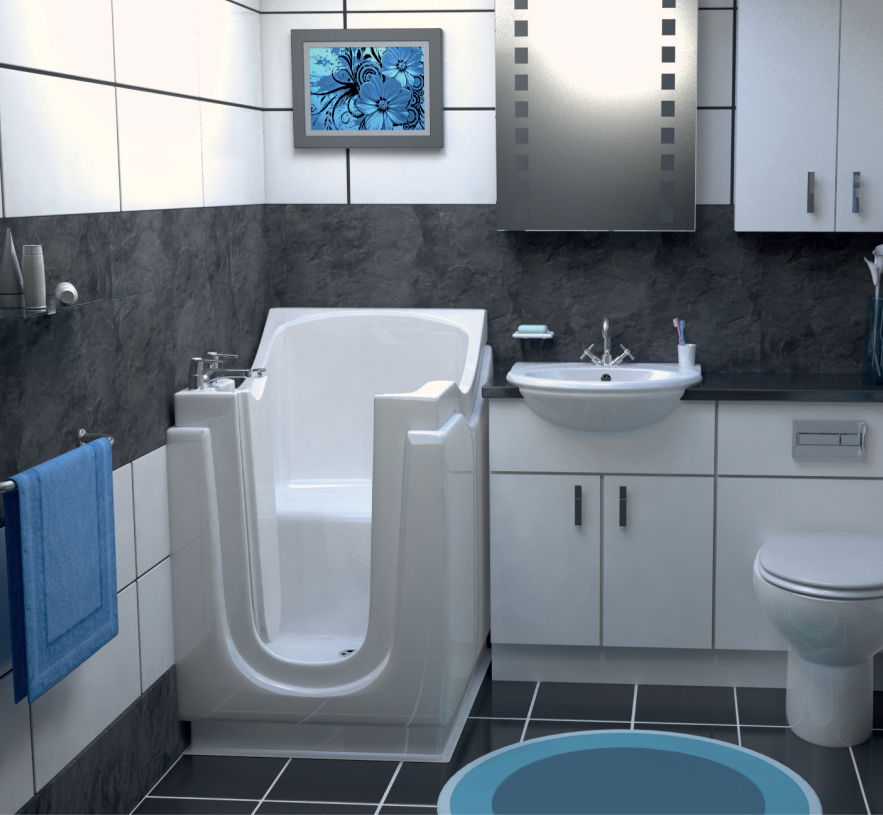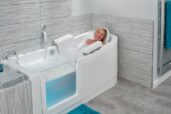The UK has an aging population, and currently just 9% of the housing stock is classed as accessible. The government has recently introduced new legislation which requires that all new homes be built to minimum accessibility standards, including entrance level step-free access. However, campaigners argue that the measures don’t go far enough.
The advantages of designing homes that can be lived in safely and comfortably by people of all ages and ranges of mobility are huge. The right housing can mean the difference between someone being able to live independently, or having to move into residential care, or live with relatives.
There are various myths and misconceptions about accessible homes, such as they are expensive or impractical, and they are unattractive to buyers. Recent research by the Centre for Ageing Better found that ‘72 per cent of UK adults think all new homes should be built to be suitable for all ages and abilities’, the Habinteg organisation reports.
Living in a future-proof can bring peace of mind, no matter what age or state of health you are in, as no one knows what’s around the corner. Interior designers are also increasingly waking up to the fact that accessible doesn’t mean unstylish. Here are some trends which are both convenient and contemporary.
Wet rooms
Installing a wet room is one of the best ways to achieve a fully accessible bathroom. They no longer have to be downstairs, if you don’t have the space to install one on the ground floor. However, an additional bathroom on the ground floor is a great way to future-proof your home, as well as coming in useful for guests, or for a growing family.
The entire wall and flooring area of the room is waterproofed, and the floor is slightly angled to aid drainage. This means that no shower tray is required, and a wheelchair user can transfer directly to a shower seat if necessary.
Wet rooms can make a smaller bathroom feel more spacious, which is important if a carer is required to assist with bathing. They also look sleek and contemporary, with more of the tiling and flooring in display.
Open plan layouts
Open plan layouts have been fashionable for a while, and according to House Beautiful, the trend is here to stay. They mean fewer barriers for disabled people, such as doorways and corridors for disabled people, and generally make navigating the space much easier. The extra space created can mean there is room for features such as a home lift, the publication explains.
Open shelving units in kitchens are now also more popular, and avoid the need to reach for handles, which can be a challenge for the less mobile.
Domestic lifts
Lifts were once the preserve of the wealthiest who lived in large homes, but they are now increasingly seen as a mainstream feature. Modern designs are much more compact than older versions, and they often take up no more space than a cupboard or wardrobe in a room.
Home lifts are available in a range of finishes to blend in with the interior décor, and there is no need to settle for the industrial style lifts which you find in shops and offices. They are essential for wheelchair users, but also useful for parents of young children, and for older guests, as well as being a way to future-proof your home.
Smart home devices
Smart technology is now an integral part of many of homes, with the majority of us owning a smartphone and computer. However, now, integrated home hubs can offer a huge range of benefits, especially for people with reduced mobility. For example, the heating, lighting, and other appliances can be controlled by one device, either by touch or voice recognition.
In the bathroom, taps, showers, soap dispensers, and toilets can be controlled with no-touch technology, which is both more accessible and more hygienic.
Smart access control systems, which link up doorbells, security cameras, locks, and motion-controlled outside lights can also provide peace of mind to elderly or less mobile people. They can be integrated with cameras on a phone or other device, so that the occupant can see who’s at the door before they answer, or just let someone know they are on their way.
Keyless entry systems can save the trouble of rooting in a bag to retrieve physical keys, which can be difficult to manipulate if your hands are affected by arthritis.
If you are interested in finding out more information, call us on 01491 411041 or visit our website.
7 December,2022








